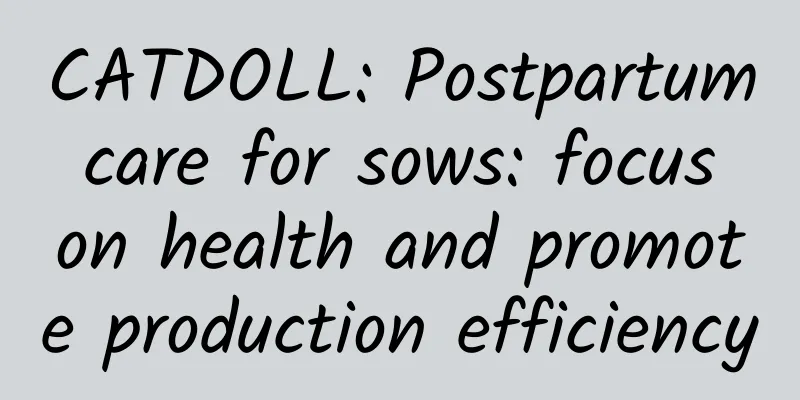CATDOLL : CATDOLL: What is the diet of Penaeus vannamei?

What is the feeding habit of Penaeus vannamei?Penaeus vannamei is an omnivorous shrimp that mainly feeds on animal bait and has a low demand for feed protein. In high-density farming, the ratio of protein in the feed nutrients is 35% to 40%, which is enough for normal growth. In the farming of Penaeus vannamei, plant protein raw materials can be fully utilized to replace the more expensive animal protein raw materials to save feed expenses. Studies have found that the growth of Penaeus vannamei in the small shrimp stage is mainly affected by the amount of protein, while the growth of medium and large shrimp stages is mainly affected by the protein source. Therefore, the use of compound feed with a higher animal protein content is not only attractive, but also has a more complete nutritional composition and a faster growth rate. The situation is also different in different breeding modes. In the extensive breeding mode, there is no need to feed high-protein feed. Extensive breeding mainly relies on natural biological bait in the sea area, and artificial compound feed is used as a supplementary feed. The amount is not large, so the requirement for protein is not so high. Why does the hepatopancreas of Penaeus vannamei always have problems? How to maintain the health of the hepatopancreas of shrimp?The digestive gland of shrimp is a large and dense gland. Since the liver and pancreas have not been completely separated, they are collectively called the hepatopancreas. The main function of the hepatopancreas is to secrete digestive enzymes, digest and absorb nutrients. Whether the hepatopancreas is normal or not is a very important indicator of the health of shrimp. When viral diseases such as white spot virus (WSSV) and Taurus virus (TSV) were rampant in China's shrimp farming industry, few farmers paid attention to the hepatopancreas of shrimp. However, in recent years, various diseases caused by hepatopancreas enlargement, atrophy, blurring, discoloration and other lesions have caused serious losses to farmers. Protecting the liver has become a problem that cannot be ignored in shrimp farming. Why has the shrimp hepatopancreas been so fragile and vulnerable in recent years? There are several main reasons. The first is the breeding of shrimp. The current breeding of shrimp only focuses on resistance to viral diseases and growth rate, while ignoring the strengthening of the digestive system and the improvement of immunity. Under the condition of energy conservation, the strengthening of one aspect will inevitably lead to the weakening of other aspects. The second is the deterioration of the breeding environment. Currently, agricultural wastewater in China has exceeded industrial wastewater, which means that the overall agriculture, including breeding, has been developing at the cost of environmental damage. Moreover, the deterioration of China's ecological environment has reached an alarming level. Third, the increase in aquaculture density and the widespread use of compound feeds have ignored or unilaterally replaced the positive effects of phytoplankton and zooplankton on shrimp and water bodies during aquaculture. It is precisely because of the existence of many objective reasons that liver protection has become a routine issue throughout the entire aquaculture process. Correct and effective liver protection for white shrimp requires the following aspects: 1. Comparison between normal liver and abnormal liver Normal white shrimp livers are generally yellow-brown, and are often affected by the color of food. A healthy liver has a white membrane at the bottom, which is connected to the stomach through the white membrane. Abnormal white shrimp livers turn red, white, swollen, or atrophic and eroded, with soft tissue and lack of elasticity. Under a microscope, diseased liver cells are unevenly arranged, and some or most of them are fatty and oily. The process of liver disease can be observed with the naked eye, and the color usually shows: yellow-brown (normal), light red, dark red (swelling, early stage), slightly white (starting to shrink), completely white (erosion, late stage). The disease can be effectively prevented and treated in the early stage. Once it enters the late stage, the liver will turn white, shrink and erode, and white shrimps will often suffer from enteritis, yellow gill disease, black gill disease, gill rot disease, red body disease, white spot disease and other diseases. Viral diseases are especially difficult to treat. The best case scenario is to keep the shrimps with milder diseases and healthier ones, and the losses are often relatively large. 2. Correct and effective liver protection process 1. Strengthen nutrition - provide the internal material basis for liver protection White shrimp liver protection should start from the shrimp seedlings. Starting from the second day of seedlings, continuous feeding of shrimp flakes or yeast and other high-nutritional starter feeds can ensure the nutritional needs of shrimp, which is conducive to the healthy development of the liver and lays a good nutritional foundation for the normal transition period. With sufficient and comprehensive nutrition, the shrimp body can synthesize the substances needed for liver development. In many cases, the absorption of nutrients is mutually reinforcing. For example, some vitamins are conducive to the absorption of mineral elements, so nutrition must be comprehensive. 2. Liver transfer period - smooth liver transfer is the key to successful breeding The liver transition period of shrimp usually refers to the process of changing from natural bait to artificial feed. Due to the change in diet, the burden on the liver increases, and the liver is also in a rapid growth and development process. Oral liver protection has a good effect, but the shrimp's food intake is still very small after the start of feeding. If the liver transition is promoted by oral liver protection drugs alone, the effect is generally not significant. It is recommended that 1-2 days before and after the shrimp is started (usually about 20-25 days for the first batch of shrimp and about 18-20 days for the second batch of shrimp), on the premise of strengthening the improvement of the pond environment, the feed should be mixed with liver protection products that are less irritating and easily absorbed by white shrimp. Bile acid is the best and has the most obvious effect on promoting liver transition. At this stage, the liver sign changes to the formation of a clear white capsule, and the organ function gradually tends to be perfect. Adding bile acid to aquatic animal feed or aquaculture water can improve the immunity and disease resistance of aquatic animals. Bile acid can effectively prevent and treat inflammation of the hepatopancreas of shrimp, which has been verified in other aquatic animals. Bile acids can help create an environment in the gastrointestinal tract of fish that can kill and digest certain bacteria and viruses. Bile acids have a strong inhibitory effect on acute and chronic inflammation. Bile acids also have a significant antibacterial effect on Gram-positive bacteria and Staphylococcus aureus cultured in vitro. Liu Yufang et al. (1998) conducted an antibacterial experiment using bile acids extracted from the gallbladder of grass carp. The results showed that bile salts had a significant inhibitory effect on three Gram-negative bacteria (Staphylococcus aureus, Sarcina lutea and Bacillus subtilis) in the intestines of grass carp. 3. Regular liver care - prevent recurrence, a healthy liver requires long-term care The shrimp's food intake increases after the liver is transferred. Although the liver has adapted to artificial compound feed, it is still under great pressure because it bears many tasks such as digestion, detoxification, and immune regulation. Adverse symptoms such as red liver and anorexia often occur. It is recommended to mix liver-protecting bile acid every 10 days (from the liver transfer period to the sale of shrimp) to prevent recurrent liver lesions and other problems, maintain the normal physiological function of the liver, and enhance digestion, absorption and detoxification capabilities. In addition, practice has shown that a healthy liver is usually not prone to producing "white feces", so preventing "white feces" in shrimp should start with maintaining the liver. 4. Strictly control the intake of food - reduce the burden on the liver and help maintain and stabilize the liver Many farmers are a bit impatient during the breeding process and often feed too much. Feeding too much will greatly increase the burden on the shrimp liver and pollute the water quality and bottom of the pond. The shrimp are easily stressed and even sick. This is why the shrimps often die first in shrimp ponds. Therefore, strict feed control can effectively reduce the burden on the shrimp liver and is especially important for liver protection. 5. Environmental improvement - providing a good environment for the development and growth of the liver Compared with fish, the requirements of the environment for the growth of white shrimp are very high, even harsh, especially for the liver. Many environmental changes are often first manifested in the shrimp's whiskers, shrimp tails, and liver. A good environment is an important external condition for the smooth and rapid development and growth of shrimp livers and successful liver transfer. Therefore, it is necessary to regularly improve the water quality and bottom environment, and often cultivate water to keep the shrimp pond in a benign material cycle and form a dynamic and stable ecosystem. |
<<: CATDOLL: How much does a 5-year-old southern golden coin turtle cost per pound?
>>: CATDOLL: How to kill a catfish
Recommend
The secrets of feed formula for pregnant sows
Importance of sow gestation feed Pregnancy is a v...
CATDOLL: The difference between clams and mussels
The difference between clams and clams What is th...
CATDOLL: How to deal with pig diarrhea and smelly feces
The reason why pigs have diarrhea and their feces...
CATDOLL: How many fish can be raised in a 5-mu fish pond? What kind of fish can be raised in a fish pond?
1. How many fish can be raised in a 5-mu fish pon...
CATDOLL: Which red worm feeder is better? (Which red worm feeder is better?)
1. Bloodworm feeder? It is an item for feeding fi...
CATDOLL: Turtle breeding technology, turtle breeding environment
Breeding conditions: If you want to breed soft-sh...
Can cats take vitamin C?
Cats can eat vitamin C. But they cannot eat it in...
CATDOLL: What are the key points in the breeding technology of whiteleg shrimp?
01. Control of pond water color The most ideal wa...
CATDOLL: Surgery methods and precautions for leaky gut in young boars
Leaky gut in young boars is a common pig disease ...
CATDOLL: What do fireflies eat when they grow up?
1. How to raise adult fireflies? The feeding devi...
CATDOLL: Are farmed red worms harmful to the body? Zhihu article (Is farmed red worms harmful to the body? Zhihu article content)
1. Is fishing with farmed red worms harmful to th...
What should I do if my cat doesn’t poop in the litter?
The solution to your cat not pooping in the litter...
CATDOLL: What are the shellfish?
The lifestyle of shellfish varies from species to...
CATDOLL: Wintering technology for barracuda farming
1. Artificial harbor aquaculture: Artificially di...
CATDOLL: Japan changes the sex of male eels to cater to market preferences. How does it work specifically?
Japan performs sex change on male eels to cater t...









